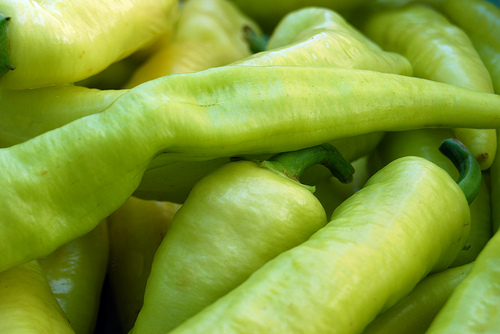Fresh salsa is a delicious summer treat. It is a healthy food option that adds color and zest to family meals and is also a great choice for summer picnics. My family loves making, and eating, homemade salsa!
 Making and preserving salsa is an easy way to use those extra tomatoes that will soon be plentiful at farmers markets and in your own garden. Fruit salsa is also fun to try with peaches, pineapple, and a number of other produce items.
Making and preserving salsa is an easy way to use those extra tomatoes that will soon be plentiful at farmers markets and in your own garden. Fruit salsa is also fun to try with peaches, pineapple, and a number of other produce items.
I am frequently asked about canning “special recipe” or “homemade” salsas. The USDA recommends only using tested recipes to ensure your family’s safety. Salsas are a mixture of both high acid ingredients (the tomatoes or fruit) and low acid ingredients (peppers, onions, and herbs). These mixtures are only safe to process in a water bath canner if the pH of everything combined is less than 4.6. In “special recipe” or “homemade” versions, it is impossible to know if the pH is within a safe range for home canning.
“Special recipe” or “homemade” versions using untested recipes can be safely frozen. It is recommended to test a small batch as the texture and flavor will change due to freezing and thawing. Add herbs and spices once the mixture has been thawed for best results.
The following is a Choice Salsa recipe from the National Center for Home Food Preservation (http://nchfp.uga.edu). If you plan to can this recipe for later enjoyment, it is important to use the listed amounts of high and low acid ingredients. You will need:
6 cups of diced tomatoes
9 cups of diced onions and/or peppers
1 ½ cups of commercially bottled lemon or lime juice
3 teaspoons of canning or pickling salt.
 Note: You can add a lot of variability to the flavor of this recipe by experimenting with different tomatoes, onions, and peppers. For example, your salsa will be mild if you use bell peppers but will become increasingly hotter if you use chili peppers (i.e. hot wax peppers or Jalapenos). Regardless of the type of peppers and onions used, the combined total for this recipe should be 9 cups.
Note: You can add a lot of variability to the flavor of this recipe by experimenting with different tomatoes, onions, and peppers. For example, your salsa will be mild if you use bell peppers but will become increasingly hotter if you use chili peppers (i.e. hot wax peppers or Jalapenos). Regardless of the type of peppers and onions used, the combined total for this recipe should be 9 cups.
For information on water bath processing see the Ohio State University Fact Sheet: Canning Basics http://ohioline.osu.edu/hyg-fact/5000/pdf/5338.pdf.
OSU Extension offers a wide variety of food preservation programs. Check with your local extension office to find out about a program near you!
Written by: Chris Kendle, Extension Educator, Family and Consumer Sciences, Ohio State University Extension, Tuscarawas County
Reviewed by: Kate Shumaker, Extension Educator, Family and Consumer Sciences, Ohio State University Extension, Holmes County and Melinda Hill, Extension Educator, Family and Consumer Sciences, Ohio State University Extension, Wayne County
Resources: Andress, Elizabeth L., Choice Salsa, University of Georgia, Athens, http://nchfp.uga.edu/publications/nchfp/factsheets/ChoiceSalsa_framedweb_Sept2013.pdf.
National Center for Home Food Preservation. Burning Issue: Canning Your Own Salsa Recipe, http://nchfp.uga.edu/publications/nchfp/factsheets/salsa.html.
Warrix, Marisa and Leong, Pam. Salsa: From Garden to Table, Ohio State University Extension, http://ohioline.osu.edu/hyg-fact/5000/pdf/5339.pdf.

